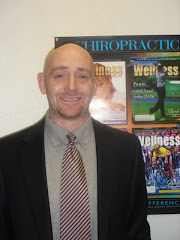Anyone who has been under anesthesia knows the peculiar feeling of emerging from its effects – the heavy lifting from an imposed unconsciousness, the strange struggle to reorient yourself.
But this happens not only in the recovery room. It takes place in the art studio too. Plunging into work, artists are “going under” in a way. They succumb to creative ether. Many say they lose track of time and place amidst their brushes, pencils, and tubes. They enter another state of consciousness. And when they are done for the day, and emerge from their creative cocoons, something has changed. And often that transformation does not just happen on the surface of the canvas, but within the artist themselves.
What happens when artists are faced with illness? Does their artmaking help them heal automatically? Is it just a momentary escape from their physical problems, or does something deeper happen?
Art did not grant immunities for artists like Deryl Mackie suffering from AIDS.
Deryl Mackie woke from a sudden brain seizure, his doctors said. But far more serious, they had discovered that he was HIV positive. That was 10 years ago. The painter and former curator of fine art at the Afro-American Museum in Philadelphia says, “I’m still here, thank God.” But the years since then haven’t been easy. Mackie explained that his diagnosis caused a certain kind of sudden isolation. In this environment of isolation, Mackie’s work, always an important part of his life, has become even more vital. He said “It becomes more important because it’s the one thing that won’t forsake me. Now, at age 50, I’ve suddenly realized that my art is the one thing that has been consistently wonderful.” Mackie said his work has evolved. It has become more personal, more biographical, more about how he feels about life.
Ken Ruffin, another artist, went into the hospital for a simple exploratory procedure, expecting to be home by the next afternoon. But during the procedure, his intestines were punctured. As a result, he spent three months in the hospital and had to undergo five major surgeries. For months after, he could barely walk. When he and his family moved from Atlanta to Las Vegas, he started taking a few pictures of the landscape. He stated, “I was using my eyes and seeing things in a different light than I had before,” he says. “I think that I’m seeing the details of life,” he says. “Just doing these photos gives me a relaxed feeling, an expressive feeling, a healing feeling. I’m expressing the beauty that is in nature, and it makes me feel better inside which is healing me.”
(Summarized from the INTERNATIONAL REVIEW OR AFRICAN ART, Vol. 16, No. 4, 2000, pp 3-15. © published by the Hampton University Museum)
Monday, November 17, 2008
Subscribe to:
Post Comments (Atom)



No comments:
Post a Comment